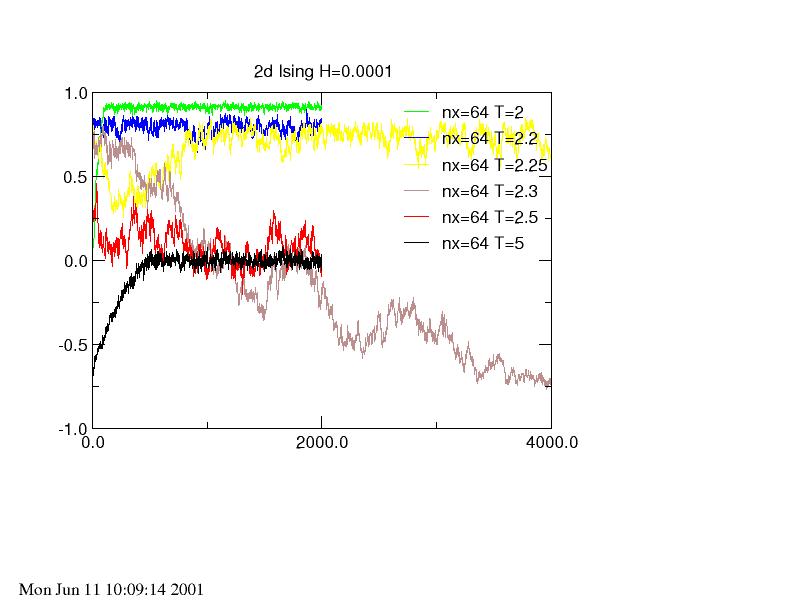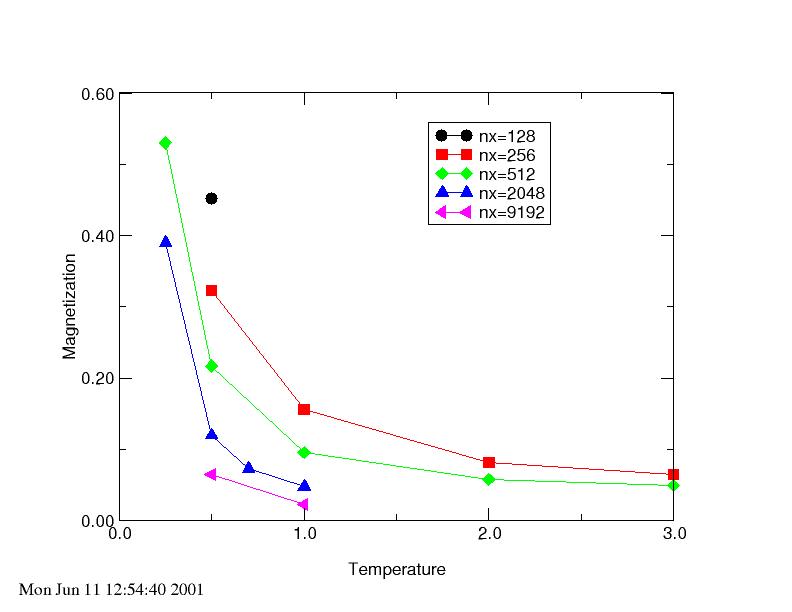Homework 4
2-dimensional Ising Model
'Time'evolution of magnetization as a function of the temperature

Note the rapid approach to 0 for large temperatures. Similarly, well below
the critical point the magnetization approaches the steady state value
quite rapidly as well.
Close to the critical temperature the fluctuations are large and the magnetization
makes large slow excursions, requiring longer simulation times.

Near the critical point the magnetization follows a power law as a function
of the distance from the critical temperature. In finite systems one
alwyas gets a rounding of the transition and the power law holds only
in a range not too close and not too far from the critical temperature.

The susceptibility diverges at the critical temperature. Again, this
divergence can only be seen approximately, with larger systems giving
better results. Also, the magnetic field should be taken infinitesimal,
i.e. dh should be small.

Instructive is also the probability distribution function for the magnetization as a function of the
temperature.

For large temperatures it is relatively sharply peaked near M=0. As the temperature
is reduced towards the critical point it becomes broader (T=2.35 and T=2.30).
Below the transition point it becomes bimodal with maxima near the typical magnetization
of the system. For very low temperatures the system remains very long near the typical
positive or negative magnetization. In the runs used here this led to a distribution with
a single maximum at a non-zero M. In a longer run a bimodal distribution would be found.
1-dimensional Ising Model
The magnetization as a function of temperature is shown for
a range of system sizes.

For any fixed temperature the magnetization decreases with increasing
system size. Over the range of temperatures investigated no phase transition
is found, consistent with the argument that any domain of the minority
phase can grow without bounds without any additional energy cost.
Even for very small temperatures (T=0.3) new domains can
appear and decrease the net magnetization if the system is long enough.
Specifically, the system has to be larger than the correlation length.
Since the correlation length diverges as the temperature goes to 0 the
system size has to grow also to see this result.
In the space-'time' diagram below the system length is L=4096.
Shown in red are the locations where spins are flipped. This indicates either the
creation of a new domain or the motion of a domain wall.

Note also the small domains that appear and disappear again.






